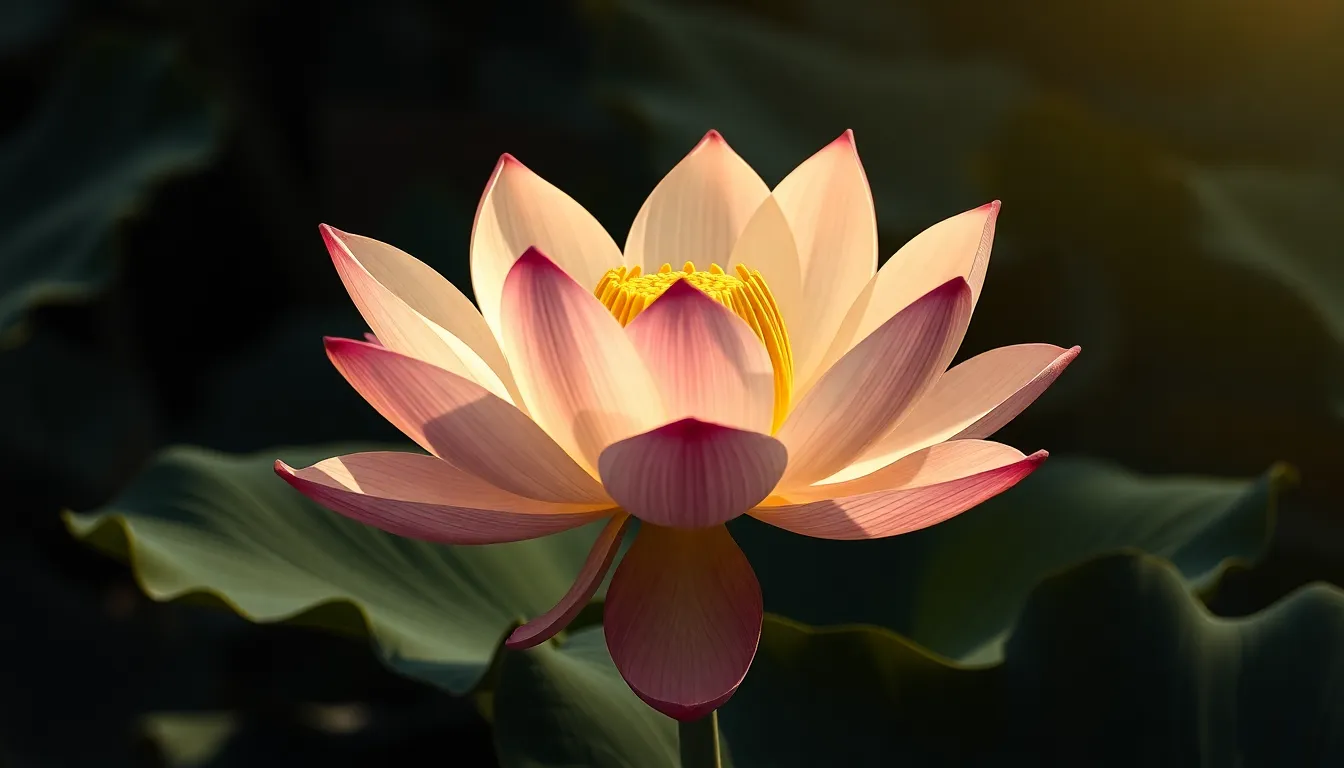The Mythical Significance of the Lotus Flower in Egyptian Culture
I. Introduction
The lotus flower, with its stunning beauty and unique ability to bloom in murky waters, holds a prominent place in Egyptian symbolism and mythology. This aquatic plant is not only a visual delight but also a profound symbol that embodies various aspects of ancient Egyptian culture, including creation, rebirth, purity, and beauty. This article aims to explore the mythical significance of the lotus flower in ancient Egypt, examining its historical context, symbolism, mythological connections, and its legacy that continues to influence modern culture.
II. Historical Context of the Lotus Flower in Ancient Egypt
In ancient Egyptian society, the lotus flower was revered for its beauty and its unique life cycle. The plant, particularly the blue lotus (Nymphaea caerulea), was often associated with the Nile River, which was central to Egyptian life and agriculture.
- Role in Society: The lotus flower was often depicted in various aspects of daily life, including art, jewelry, and architecture. It was considered a symbol of fertility and was associated with the Nile’s annual flooding, a phenomenon that brought life to the land.
- Archaeological Findings: Excavations in ancient Egyptian sites have revealed numerous artifacts adorned with lotus motifs, including pottery, sculptures, and jewelry. The presence of lotus imagery in tombs and temples highlights its importance in religious and cultural practices.
III. Symbolism of the Lotus Flower
The symbolism of the lotus flower is rich and multifaceted, resonating through various facets of ancient Egyptian life and belief systems.
- Association with Creation and Rebirth: The lotus flower is often linked to creation myths in Egyptian mythology. It is said that the sun god Ra emerged from a lotus that bloomed on the primordial waters of chaos, symbolizing the dawn of creation. This connection to creation extends to concepts of rebirth, as the lotus closes its petals at night and reopens at dawn, mirroring the cycle of life and death.
- The Lotus as a Symbol of Purity and Beauty: The pristine appearance of the lotus flower, rising above muddy waters, represents purity and beauty. In Egyptian culture, it was often associated with the divine and the afterlife, symbolizing the soul’s journey towards purity and enlightenment.
IV. The Lotus in Egyptian Mythology
In Egyptian mythology, the lotus flower plays a significant role in various creation narratives and is closely associated with several deities.
- The Lotus in Creation Myths: One of the most prominent myths involves the god Atum, who is said to have emerged from a lotus flower. This narrative establishes the lotus as a foundational element in the story of creation, representing the emergence of life from chaos.
- Deities Associated with the Lotus Flower: Several Egyptian deities are linked to the lotus, including:
- Hathor: The goddess of love, beauty, and motherhood, often depicted with lotus flowers.
- Osiris: The god of the afterlife and resurrection, whose association with the lotus emphasizes themes of rebirth.
V. The Lotus Flower in Art and Architecture
The lotus flower’s influence is prominently visible in ancient Egyptian art and architecture, where it serves both decorative and symbolic purposes.
- Representations in Ancient Egyptian Art: The lotus is a recurring motif in paintings, carvings, and jewelry. It often appears in scenes depicting gods and pharaohs, symbolizing their divine connection and purity.
- Use of the Lotus Motif in Temples and Monuments: Temples and monuments often incorporated lotus designs in their architecture, symbolizing the connection between the earthly and the divine. The use of lotus columns, for instance, was a common architectural feature in many temples.
VI. The Lotus Flower in Religious Practices
In ancient Egyptian religious practices, the lotus flower held significant importance, particularly in rituals and funerary customs.
- Rituals and Offerings Involving the Lotus: The lotus was often used in religious ceremonies and as an offering to the gods. It was believed to possess magical properties that could connect worshippers with the divine.
- The Lotus’s Significance in Funerary Customs: The lotus flower was commonly included in burial goods and tomb decorations, symbolizing the deceased’s journey to the afterlife and their rebirth in the next world.
VII. The Legacy of the Lotus Flower in Modern Culture
The lotus flower’s significance extends beyond ancient Egypt, continuing to resonate in modern culture, particularly in Egypt.
- Continued Relevance in Contemporary Egyptian Identity: Today, the lotus flower is a symbol of Egyptian identity and pride. It represents the country’s rich history and cultural heritage.
- The Lotus in Modern Art and Symbolism: The lotus continues to inspire artists and designers, appearing in various forms of art, fashion, and design, often symbolizing purity, beauty, and resilience.
VIII. Conclusion
The lotus flower, with its deep-rooted connections to creation, rebirth, purity, and beauty, holds a mythical significance that has endured through the ages. From its prominent role in ancient Egyptian mythology to its continued relevance in modern culture, the lotus remains a powerful symbol that encapsulates the essence of Egyptian heritage. Its legacy is a testament to the enduring power of nature and the human spirit’s quest for beauty and purity.




